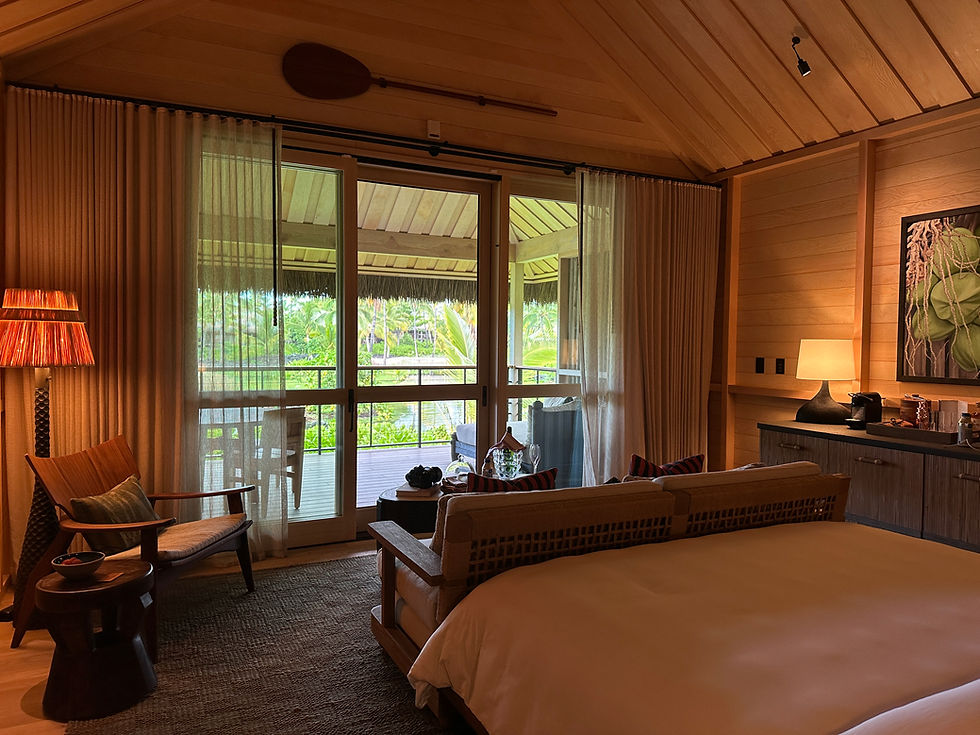Hillwood --A hidden gem in DC
- Zoey Zong
- Jun 30, 2024
- 3 min read
History
After her divorce from her third husband, Joseph E. Davies, Post bought Arbremont, a Georgian Colonial estate in northwest Washington on the edge of Rock Creek Park, renaming it Hillwood, a name she had also used for her former property in Brookville, New York.[1]
Arbremont, with its 36 rooms, had been built in the 1920s by Daisy Peck Blodgett, wife of Delos A. Blodgett Jr, a Michigan lumber tycoon and daughter of Professor William Henry Peck of Atlanta, Georgia. Blodgett built Arbremont House for her daughter, Helen Blodgett Erwin. A second house known as The Rocks across Rock Creek Park was built for her second daughter and was eventually purchased by Jay Rockefeller.
After Post acquired the property from the Erwins, she hired the architect Alexander McIlvaine to gut and rebuild its interior. The renovations, which included moving the library doors to frame a view of the Washington Monument, were completed in 1956. Showcasing her collections including French, Asian, and – what Hillwood is most known for – Russian art and religious objects.
A view of the Lunar Lawn and Mansion
During her marriage with Davies, who served as the second ambassador to the Soviet Union in the mid-1930s, she acquired a vast collection of objects from the pre-Bolshevik Russia, including a chandelier from the Catherine Palace that hung in her breakfast nook, and Fabergé art works including the Twelve Monograms Easter egg. Post had her first guests to the house in May 1957 and hosted her first big party there on July 7, 1957. Hillwood quickly gained a reputation as one of Washington's "most extraordinary estates."
As a tribute to Post after her 70th birthday, 181 of her friends built "Friendship Walk," a path from Hillwood's rose garden to a crest overlooking Rock Creek Park.[1]
Concerned with Hillwood's fate after her death, Post arranged in 1962 to bequeath the estate, along with a $10 million endowment to maintain it, to the Smithsonian Institution so that it might be maintained as a museum. She made the bequest of Hillwood (as well as most of her other properties) contingent upon its being maintained and used according to her wishes (which included the condition that the estate not be used for dining), and she established the Marjorie Merriweather Post Foundation of the District of Columbia to ensure compliance: any property improperly used would revert to the Foundation. Post was residing at Hillwood when she died on September 12, 1973.[1]
The Smithsonian declined to make the changes needed to convert Hillwood to a museum, and complained that by 1975 the endowment, producing $450,000 annual income, was insufficient to maintain the site. Accordingly, Hillwood and the majority of the collection was returned to the Post Foundation by April 1976.[1]
Hillwood is now maintained by the Post Foundation as the Hillwood Museum and Gardens, showcasing 18th- and 19th-century French art and art treasures from Imperial Russia.
Japanese-styled Garden
Designed by Shogo Myaida and clearly reflecting Marjorie Post’s love of collecting decorative objects, this non-traditional Japanese garden offers action and intrigue instead of opportunities for contemplative meditation found in other Japanese gardens. Well-placed stone lanterns, pagodas, symbolic animals, and statues with storied significance populate the various niches.
The plants provide interesting contrasts of color and texture. The delicate tracery of the reddish Japanese maple is juxtaposed with the evergreen white pine towering over it, its soft fat clumps of needles silhouetted against the sky. Hundreds of carefully placed stones create a subtle structure that adds stability to the garden, while flowing water activates the senses of sight and sound.



Hillwood’s spectacular gardens capture the vision Marjorie Post conceived when rebuilding the estate in the 1950s. She hired prominent landscape architects Umberto Innocenti and Richard Webel to expand the existing gardens. Thirteen acres of formal gardens extend from the house’s terraces and porches in a progression of "outdoor rooms." Each of these rooms, meant to complement the mansion's interior spaces, is decidedly private yet connected to adjacent gardens through subtle transitional features, encouraging an intuitive flow from the French parterre to the rose garden and onto the Friendship Walk.
Whether you stroll them at your own leisurely pace, learn more through a guided audio tour, or let a docent be your guide, the gardens are beautiful year-round. See what's in bloom and plan your visit today.






Marjorie Post maintained strong ties to the eighteenth-century French decorating style that she developed in the 1920s, transferring much of this look to her new home at Hillwood in the mid-1950s. This did not keep her from updating her Georgian-style mansion with the most modern conveniences that money could buy. Journey through her final home to experience the elegant French drawing room, the efficient and “high-tech” kitchen and pantry, and the many personal touches that made Hillwood one of Washington’s most memorable homes.






Comments